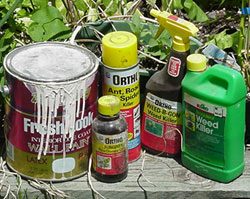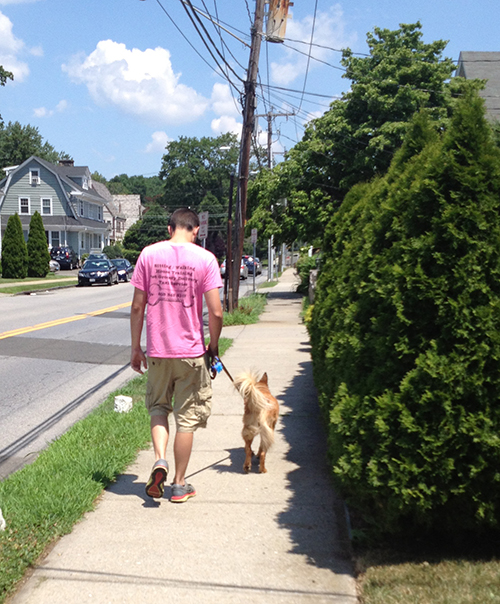Dispose of Hazardous Waste Properly
Norwalk River Watershed AssociationWhat to Do with Your Household Hazardous Waste Like Paint, Batteries, Cleaners Pesticides…
The Environmental Protection Agency advises that leftover household products containing corrosive, toxic, ignitable, or reactive ingredients such as paints, cleaners, oils, batteries, and pesticides, have potentially hazardous ingredients requiring special care when you dispose of them.
Improper disposal of hazardous household waste can include pouring them down the drain, on the ground, into storm sewers, or in some cases, putting them out with the trash. The dangers of such disposal methods might not be immediately obvious, but improper disposal of these wastes can pollute the environment and pose a threat to human health. More information is available at the EPA website.
Household Hazardous Waste Collection Days
Click for This Year’s Hazardous Waste Collection Day Schedule. Each town in the watershed holds one day a year during which it collects hazardous household waste from the community. Check when your town holds collection days and bring any household products containing corrosive, toxic, ignitable or reactive ingredients such as cleaners, oils, batteries and pesticides. (For more information on discarding paint, pharmaceuticals and pet waste see links and more information below.)
Pet Waste
In 1991, the EPA classified dog waste as a contaminant, putting it into the same category as herbicides, insecticides, oil, grease and toxic chemicals, and acid drainage from abandoned mines.
Pet waste can be a significant source of water quality problems and a factor in eutrophication (i.e., depletion of oxygen) in lakes. Animal fecal matter contains bacteria, parasites, and viruses, as well as organic matter and nutrients, notably nitrogen and phosphorous.
- 95% of the fecal coliform found in urban stormwater is of non-human origin (Aldenso et al., 1996, Trial et al., 1993)
- A single gram of dog feces can contain 23 million coliform bacteria (van deer Wel, 1995).
- Decaying pet waste consumes oxygen and sometimes releases ammonia. Low oxygen levels and ammonia can damage the health of fish and other aquatic life.
- Pet waste can enter our stormwater system through storm water runoff, which eventually ends up polluting our drinking water system and causes more expense in the treatment of our drinking water.
- Pet waste can increase the amount of nutrients in our water and ecosystem to toxic levels.
- Pet waste is high in nutrients, which feeds the weeds and algae in our creeks and lakes causing excessive growth.
- This excessive growth makes the water cloudy and green, which is unattractive and an indication of a decline in water quality.
Proper disposal of pet waste means routinely picking-up after pets:
- Use dry methods such as scooping or raking instead of other methods, especially those involving the use of water.
- Properly dispose of pet droppings, uneaten food, and other potential contaminants into the trash to prevent the material from entering the streets, gutters, storm drain systems or waterways. Prompt clean up will also prevent unwanted insect pests which may be attracted by food or waste.
- Never throw pet waste into the street, creeks, stream, or storm drain.
- If water is used for cleaning, do not discharge wash water to streets, gutters, storm drain systems or waterways.
- If contaminants are not harmful to plants, rinse water may be directed to a landscaped area. Do not use rinse water on edible plants such as vegetables, fruit, herbs.
Paint
- Since the start of the Connecticut paint stewardship law in July, 2013, it has been convenient to recycle paint in Connecticut. PaintCare, a non-profit 501(c) (3) organization, was organized by the American Coatings Association to implement the state-mandated program. Connecticut has set up 131 drop-off sites where the public can take unwanted, leftover paint for recycling. Most of these sites are at paint retailers (paint and hardware stores) that have volunteered to take back paint, and they are available to any resident and business in Connecticut. These stores accept paint whenever they are open for business.
- A number of PaintCare drop-off sites are transfer stations – these locations only accept paint from their own residents.
- A few restrictions apply: there are limits on how much paint can be dropped off per visit, generally up to 5 gallons, and the cans must have their labels and be closed.
- When you decide it’s time to recycle your paint, please call your site beforehand to confirm their hours and to make sure they have space to accept the amount of paint you would like to recycle.
Find a PaintCare drop-off location:
Paintcare.org
Wilton Public Works
Pharmaceuticals
Many residents keep medicines at home after they no longer need them or after their expiration date because they are unsure how to dispose of them properly. Flushing unwanted pharmaceuticals down toilets or putting them into the trash can contribute to contamination of surface waters, ground waters and biosolids.
In the watershed, New Canaan, Ridgefield and Wilton have an anonymous lock-box located in the foyer of the Police Station which is available for disposing of expired pharmaceuticals. Residents can deposit their unwanted drugs in the box year-round. The lock-box is emptied routinely using secure and confidential procedures, and methods for proper disposition.
Pharmaceutical drop-off sites in CT
Wilton Conservation Department



